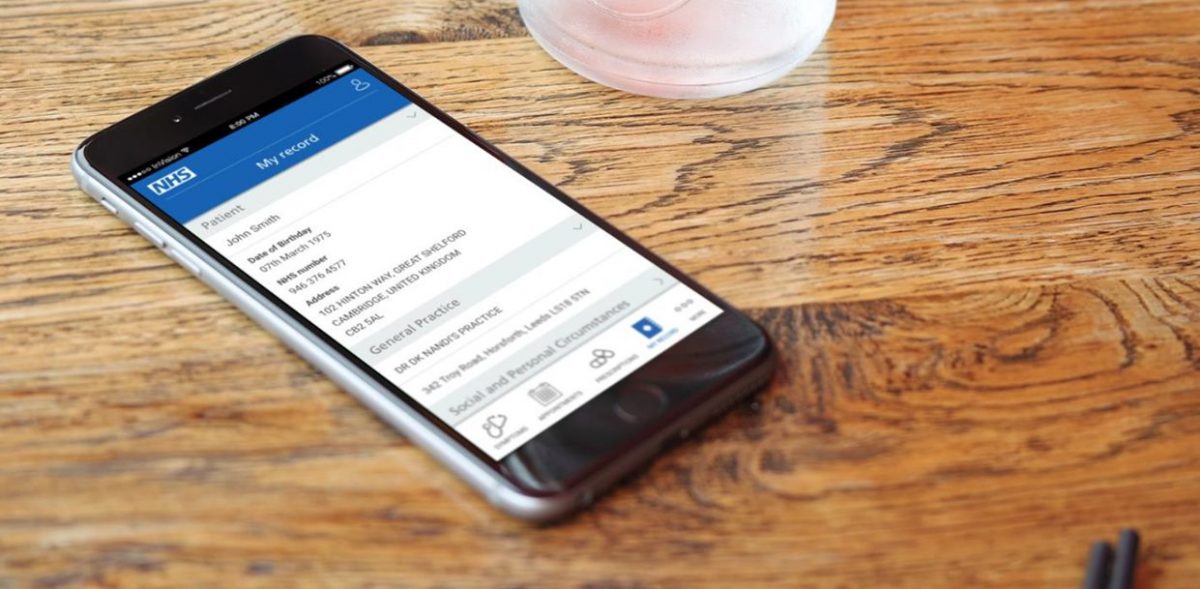Real Time Exemption Checking (RTEC)
Published on: 27th October 2018 | Updated on: 12th October 2023
Real Time Exemption Checking (RTEC) is a technical solution enabling the PMR system to automatically find out whether a patient has a known exemption that can auto-apply to their EPS prescription. If the PMR system confirms an exemption, the EPS prescription is auto-flagged as exempt so that the patient won’t need to make a written exemption status declaration. If the system cannot identify an exemption the pharmacy team and the patient will use the usual process.
RTEC was rolled out in phases: NHSBSA exemptions and Department for Work and Pensions (DWP).
Community Pharmacy England recommends contractors register for RTEC now using the guidance set out below.
The system uses data on people’s prescription charge exemption status, held by the NHS Business Services Authority (NHSBSA). The check of the NHSBSA data will usually occur automatically at the time the prescription is being processed in the PMR system to produce dispensing labels, but PMR suppliers have some flexibility about the point that the data will be requested from the NHSBSA using an Application Programming Interface (API) built into the PMR system.
Pharmacy staff will not normally need to check the patient’s exemption status more than once, but a second check will be possible, if the patient queries the initial status returned by the NHSBSA system and by the DWP system/information. If the patient believes they are exempt from prescription charges, but RTEC returns no exemption information, the patient will complete a declaration on an EPS token in the normal way.
If a prescription is confirmed by RTEC as exempt, it will be treated as such by the NHSBSA and no further prescription exemption checks will be applied, and the patient will not need to complete a declaration on an EPS token.
Through the operation of the system described in the above diagram, it is expected that RTEC will:
- reduce the risks of contractor loss caused by pharmacy staff inadvertently submitting EPS prescriptions with a paid status when the category should have been exempt;
- enable a reduction in the number of EPS tokens which have to be printed, completed by patients and then be sent from pharmacies to the NHSBSA;
- provide a more efficient digital process for pharmacy staff, reducing the time spent helping patients complete declarations, checking physical evidence of exemption status and sorting tokens for submission to the NHSBSA;
- reduce the risk to the NHS of prescription fraud due to a decrease in false prescription exemption claims; and
- increase convenience for patients, as there will be less need for them to provide physical proof of exemption from prescription charges.
Phasing of RTEC categories rolling out
The RTEC system was rolled out in phases:
- Phase One comprises maternity, medical, pre-payment, low-income scheme and HMRC exemptions (Phase One RTEC is rolling out now amongst contractors with PMR systems that have introduced the RTEC feature);
- Phase Two includes Department for Work and Pensions (DWP) exemptions (excepting Universal Credit) (suppliers are rolling this out); and
- Phase Three will include Department for Work and Pensions (DWP) Universal Credit exemption.
After the first three phases are embedded, NHSBSA and NHS Digital plans to conduct a prioritisation and costing exercise to explore the possibility of including the Education and Ministry of Defence exemptions in the system. There is a lower volume of prescriptions which fall into these categories.
The original 2019 RTEC Phase One piloting: PSL
Four community pharmacy contractors piloted Real Time Exemption Checking (RTEC) from February 2019 and across 2019. NHS Digital worked with the NHS Business Services Authority (NHSBSA) and Positive Solutions (PSL) Analyst system to develop the RTEC system and supporting suppliers to roll it out to many more pharmacies and pharmacy systems after.
RTEC has already been rolled out to PMR systems more than a thousand pharmacies and further rollouts are scheduled in the coming weeks and months in pharmacies that use the Cegedim Pharmacy Manager, EMIS Proscript Connect, Invatech Titan and Positive Solutions PMR systems.
Before RTEC can be activated for an individual pharmacy, the pharmacy contractor must confirm they agree to the terms of the RTEC user agreement.
Contractors can now read the RTEC user agreement and confirm their acceptance of it via an RTEC registration form in the NHS Business Services Authority’s (NHSBSA) Manage Your Service (MYS) application.
NHSBSA and Community Pharmacy England are recommending that contractors complete this form in MYS to avoid delays in their system supplier activating RTEC as part of their rollout programme.
How to register
It will take around five minutes to read the user agreement and confirm that you accept the terms and wish to use RTEC once it can be rolled out to your PMR system.
The NHSBSA have published a registration guide which explains how to log in to MYS and confirm acceptance of the RTEC user agreement.
Contractors that are already using RTEC should also confirm their acceptance of the user agreement, if they have not already done so.
Pharmacy multiples can submit a bulk declaration for multiple pharmacies if they wish (see the NHSBSA registration guide for details of how to do this).
Registrations help to demonstrate the value to those suppliers considering when to add the RTEC feature for their users.
PSL contractors initially began using RTEC Phase One (see the section above for information about RTEC phasing) in 2019 and other EPS R2 PMR suppliers also rolled out from 2020 to more of their pharmacies. The table below will be updated further as developments continue.
Other pharmacy system suppliers are also working with NHSBSA and NHS Digital for scheduling of testing and then if the later testing is successful a move towards rollout.
| Pharmacy system and supplier* | RTEC Phase One exemptions (NHSBSA exemption categories) |
RTEC Phase Two (DWP exemptions first stage) |
RTEC Phase Three (DWP exemptions second stage) |
| Analyst PMR (Positive Solutions (PSL)) | First supplier to add feature. Mostly rolled out. Contact helpdesk if you don’t have feature and register for RTEC. | Mostly rolled out. | Mostly rolled out |
| Colombus (Boots) | Complete | Complete | Mostly rolled out |
| LS systems (Lloydspharmacy) | Mostly rolled out | Mostly rolled out | Mostly rolled out |
| CoMPass(Lloydspharmacy) | Not rolling out. Users are transitioning to new system. | Not rolling out. | Not rolling out. |
| Pharmacy Manager (Cegedim Rx) | Mostly rolled out. Contact helpdesk if you don’t have feature and register for RTEC. | Mostly rolled out. | tbc |
| Nexphase (Cegedim Rx) | Not rolling out. | Not rolling out. | Not rolling out. |
| ProScript via AAH (AAH) | Mostly rolled out. Contact helpdesk if you don’t have feature and register for RTEC. | Mostly rolled out | tbc |
| ProScript Connect (EMIS Health) | Mostly rolled out. Contact helpdesk if you don’t have feature and register for RTEC. | Mostly rolled out | tbc |
| RxWeb (Clanwilliam) | Mostly rolled out | Mostly rolled out | tbc |
| Titan (Invatechhealth) | Mostly rolled out. Contact helpdesk if you don’t have feature and register for RTEC. | Mostly rolled out. | tbc |
| V-Rx (VCare) |
Mostly rolled out | Mostly rolled out | tbc |
PMR suppliers will work with NHSBSA and with NHS Digital specification and settings. If pharmacy teams have more detailed questions about when PMR suppliers’ plans you may also refer to the Supplier contact information webpage. The Community Pharmacy IT Group (CP ITG) has encouraged PMR suppliers to pursue the opportunity to progress with RTEC at the earliest opportunity.
*PMR supplier queries to Community Pharmacy England can be directed to it@cpe.org.uk
System suppliers are seeking community pharmacy contractor volunteers to take part in Real Time Exemption Checking (RTEC) piloting. This follows the announcement that RTEC is due to be piloted and rolled out across more pharmacy patient medication record (PMR) systems.
Participation in the pilot or earlier roll-out will provide you with an opportunity to provide feedback directly to your PMR supplier and other stakeholders (which could include the NHS Business Services Authority, Community Pharmacy England and NHS Digital) about how the RTEC feature might best work for your pharmacy team.
Contractors that wish to take part or find out more can email it@cpe.org.uk with ‘RTEC’ in the subject*. Note, volunteers may be chosen on a ‘first-come-first-served’ basis.
If you are interested in sharing your views on wider digital, IT and EPS developments with Community Pharmacy England, please consider joining the Community Pharmacy Digital mailing group.
What to do if RTEC has stopped working?
If the RTEC system has temporarily stopped working within the pharmacy, then the pharmacy team should use the non-RTEC process (as was used before your PMR had the RTEC feature). The patient may complete the EPS token declaration as usual, where needed.
Communications about RTEC outages
NHSBSA has agreed with Community Pharmacy England that if there is any planned maintenance or an unexpected outage impacting the running of RTEC, then NHSBSA will notify the PMR system suppliers so that the suppliers are able to share communications onwards to pharmacy contractors. PMR suppliers may issue the communication within the system itself, by email and/or on their website.
RTEC business continuity impacts
Community Pharmacy England has communicated to NHSBSA that for those pharmacies which become accustomed to using the RTEC system, the loss of access to the RTEC systems causes disruption: records of patients’ exemption statuses will no longer have been maintained, patients will have become accustomed to using a new process, and there is a workload associated with reverting to a process the pharmacy had already moved away from.
NHSBSA have stated they intend to minimise those incidents in which the RTEC system is impacted by downtime.
Read the RTEC FAQs one-pager factsheet.
Q. MY RTEC system does not display the specific exemption type. Is that right?
Yes, this is how RTEC is expected to work. When you use RTEC, your PMR system should confirm an RTEC exemption is present (or ‘RTEC yes’) or determine ‘RTEC status unknown’ so that your team can use the usual process you used to use before RTEC. You won’t be able to determine which specific exemption category is present.
Q. Do I need to submit EPS tokens for prescriptions with an RTEC exemption?
No. The PMR system can apply the RTEC information onto the EPS prescription and therefore those tokens won’t need to be sent to NHSBSA.
Q. Our system performs the RTEC check earlier during the dispensing process and ‘RTEC’ real time exempt was already confirmed on the prescription? Is there a need to check again later if there is a slight gap between dispensing and supply?
No. There is no requirement to check a prescription twice if RTEC already applied to the prescription. See also the question below.
You may inform the patient that an RTEC check has already been performed earlier during the dispensing process which has stamped the prescription RTEC and therefore a penalty notice cannot apply.
Q. Might a patient receive a penalty notice charge if their prescription was real time exempted by the RTEC system at the original time of the RTEC check?
No. Those prescriptions if stamped as real-time exempt by the RTEC system do not require investigation.
Q. My system performs the RTEC check during the dispensing process and originally the RTEC system found ‘unknown’, but the patient now explains they have a new exempt status since (e.g. have just purchased a relevant certificate or they have reached 60 years old)?
There is an ability to re-perform the RTEC check with an override so that the patient can re-confirm their status in a rare scenario such as this, although performing two checks for each prescription is not required, a patient can ask for a second check.
The override option is intended for infrequent scenarios such as when patients may have originally been confirmed ‘unknown’ and have since become exempt.
Q. The patient says that RTEC system should be identifying an exemption, but the RTEC system is not finding an exemption?
This can occur if the exemption may no longer be in place or if there is a mismatch between databases e.g. if the patient’s address at the GP practice and their address within NHSBSA/DWP records is different or if there is a name mismatch (see question below which explains how patients can update the NHSBSA/DWP with their new or correct address/name information).
The NHSBSA’s RTEC patient-facing and pharmacy materials explain for patients to make use of RTEC for NHSBSA exemption categories, patients need to ensure that their address at the GP practice and held by the NHSBSA is aligned. To benefit from using the RTEC system, patients who move address must:
- contact their GP practice to correct their address information; and
- contact NHSBSA to correct their address information.
The prescription charge refund (FP57 form) procedure can apply in scenarios such as where:
- the patient (or representative) requests a refund form;
- the patient (or representative) is unsure whether they are entitled to free prescriptions; or
- the patient (or representative) has applied or will be applying for a prescription charge exemption certificate or prepayment certificate.
Q. What is the process for patients to update their new or correct address/name records held by the NHSBSA?
If patients arrive at your pharmacy expecting RTEC to confirm their BSA exemption but ‘RTEC unknown’ is returned on the PMR system (see also, question above), you may ask patients whether they have moved address and if so, whether both the GP practice and NHSBSA have updated their records following the patient’s request. Additionally you may check whether their name is correct in both places and matching. A mismatch of names could also prevent a positive RTEC confirmation.
Process for patient who need to request NHSBSA update their address: NHSBSA’s contact webpage includes a link to a patient contact NHSBSA webform which patients can use to request their address information is updated.
The small print under the ‘Query’ box had explained how patients can update NHSBSA address information, by including the new address in the relevant ‘address’ fields and “including your previous address, including postcode in the query box” (as of early 2020).
Given that the process for the patient and the NHSBSA updating of the NHSBSA address records may take a bit of time, the pharmacy team might need to use the non-RTEC route of capturing exemption (e.g. EPS token declaration etc.).
The webform can also be used to request that a name is corrected/adjusted.
Patients can also use the NHSBSA patient checker tool (see question below) to access information about their exemption status. Additional contact information for NHSBSA is set out on the NHSBSA’s contact webpage.
Q. Can patients also check information relating to their own exemption?
Patients may refer to NHSBSA patient checker tool to view some information about their exemption category. Whilst using the tool, patients will enter the postcode held by the NHSBSA into the tool to access their information.
Q. Before RTEC, visibility of maternity exemption status had assisted clinical decision making, but maternity exemption is not visible with RTEC. How is this addressed?
Community Pharmacy Patient Safety Group (CPPSG) have highlighted that RTEC will not provide the specific exemption status to the pharmacy, as explained earlier, a check will provide either ‘unknown’ or ‘exempt’. In the past, some pharmacy teams may have used patients’ maternity declaration to help identify some of those patients which were pregnant or breastfeeding. While this was not the only or a guaranteed source of information, it may have sometimes assisted in clinical decision making relating to this group of patients.
CPPSG have produced a Real Time Exemption Checking and maternity resource: poster and factsheet for pharmacy teams. The resource:
- Reminds pharmacy teams to encourage patients to notify healthcare professionals if they are pregnant or breast feeding.
- Includes a patient-facing poster to promote this amongst patients.
- Reminds pharmacy teams that: women who miscarry or have a stillborn child are eligible for free NHS prescriptions until their maternity exemption certificate expires; and pharmacy teams should use expert clinical judgement and compassion when having difficult conversations.
- Includes links to additional resources relating to dispensing for this group of patients.
Community Pharmacy England is supportive of future standards and systems seeking opportunities to better enable a more seamless transfer of the information that patients expect should be transferred (e.g. that where pregnant women update their health record with their status, that the staff caring for them have sight of information where it is needed).
If you have queries on this webpage or you require more information please contact it@cpe.org.uk. To share and hear views about digital developments with like-minded pharmacy team members, join the CP Digital email group today.
Return to the Pharmacy IT hub; Future pharmacy IT developments or IT a-z index














